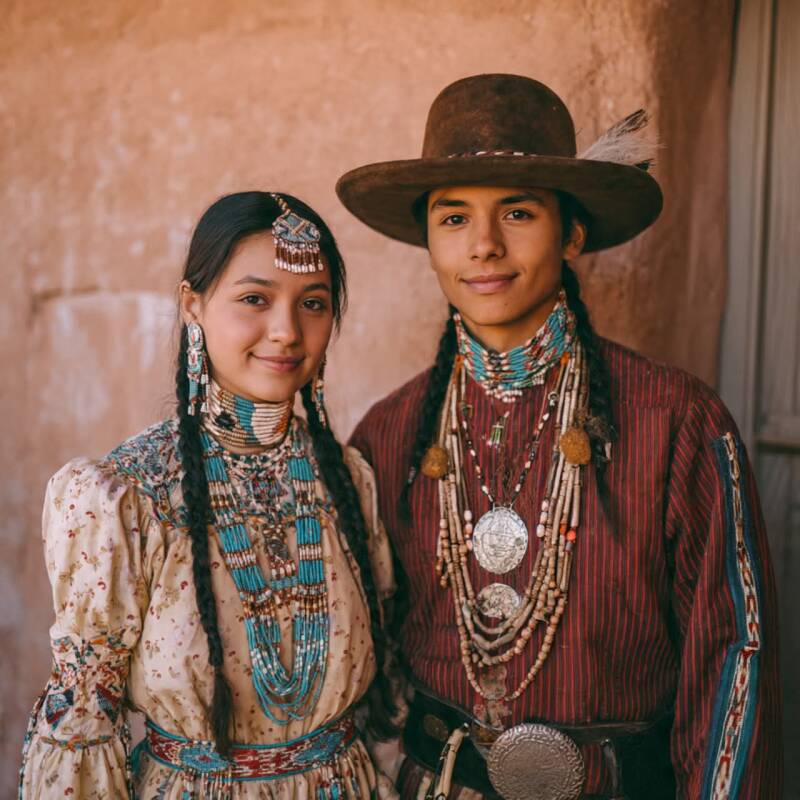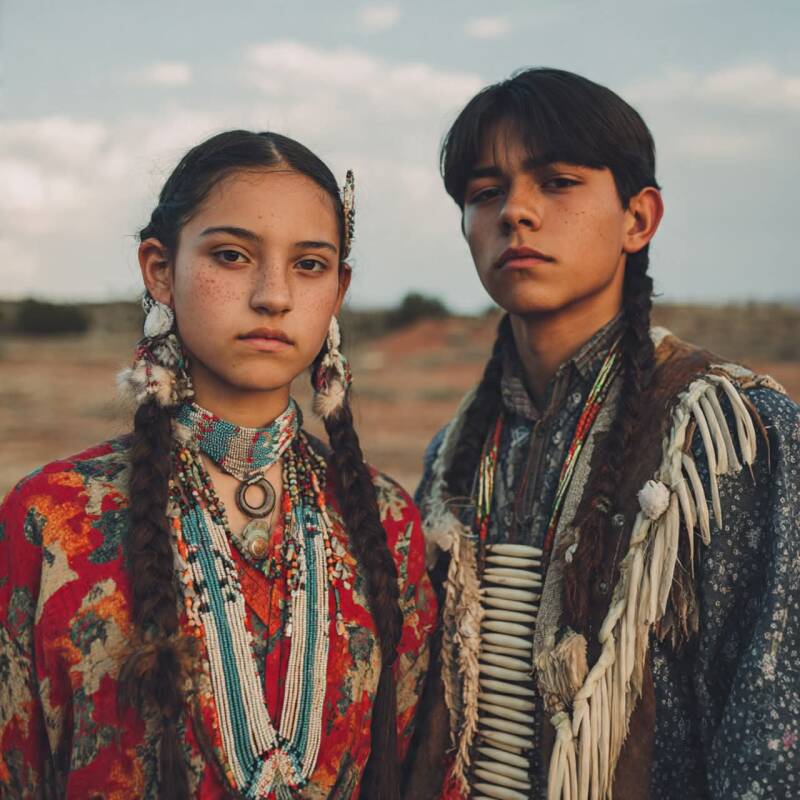
I want to begin by apologizing for the very late start on this post — the past days have found me incredibly ill, and it has taken me longer than I hoped to share this important story. But Native American Heritage Month is far too meaningful to pass by without acknowledgment, and today, I am honored to shine a light on the Diné people.
Many know them by the name Navajo, but in their own language, they call themselves Diné, meaning The People. Their ancestral homeland, Diné Bikéyah, spans parts of what are now Arizona, New Mexico, Utah, and Colorado — the sacred Four Corners region. The Diné have preserved their culture, language, and traditions despite centuries of colonization, forced displacement, and attempts at assimilation.
One of the darkest chapters in Diné history is the Long Walk (1864), when the U.S. government forced thousands of Diné to march hundreds of miles from their homeland to the Bosque Redondo internment camp in New Mexico. Thousands perished along the way due to starvation, disease, and harsh conditions. Yet, the Diné endured. After their return, they rebuilt their communities, revitalized their traditions, and strengthened their sovereignty. Their story is one of resilience and unwavering identity.

Language and Oral Tradition
Language is the lifeblood of Diné culture. Diné bizaad, the Diné language, carries not only communication but centuries of stories, prayers, songs, and spiritual teachings. Oral tradition is central, passing knowledge from elders to younger generations in the form of songs, stories, and ceremonial teachings. This has allowed Diné culture to survive and thrive despite outside pressures and historical attempts to erase it.
Spirituality and Connection to Land
The Diné worldview is deeply rooted in balance, harmony, and connection to the natural world. Ceremonies, prayers, and rituals often honor the holy people (Diyin Dine’é) and sacred elements such as the sun, mountains, and water. Practices like Blessingway ceremonies celebrate life, health, and community, while other rituals mark transitions, protection, and guidance. For the Diné, the land is not just a place to live — it is sacred, sustaining physical and spiritual life alike.

Art, Craft, and Expression
Diné artistry is globally recognized for its beauty and craftsmanship. Weaving, especially rugs and blankets, reflects ancestral teachings, geometric symbolism, and traditional storytelling. Silver and turquoise jewelry expresses cultural identity and is often passed down as family heirlooms. These creative practices are not just aesthetic — they are an enduring part of Diné culture, memory, and resilience.
Governance and Contemporary Achievements
The Diné Nation operates under a sovereign government with its own President, Council, and judicial system. Today, they manage programs for education, health, environmental protection, and cultural preservation. Diné leaders, educators, and artists continue to make significant contributions both within the Nation and beyond, highlighting the enduring strength and vision of their people.
Honoring the Diné is about more than acknowledgment — it is about listening, learning, and respecting their truth. Saying their true name, Diné, is a small but vital step toward doing just that. Their story reminds us that survival, resilience, and identity are inseparable from culture, land, and community.
Resources to learn more and support the Diné:
- Navajo Nation Museum
- Diné College
- Navajo Times
- Book: Sacred Earth: The Navajo Creation Story by Evangeline Parsons Yazzie
- Book: The Navajo Long Walk: The Forced Exile of a Proud People by Mary Packard
Add comment
Comments